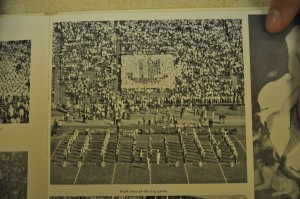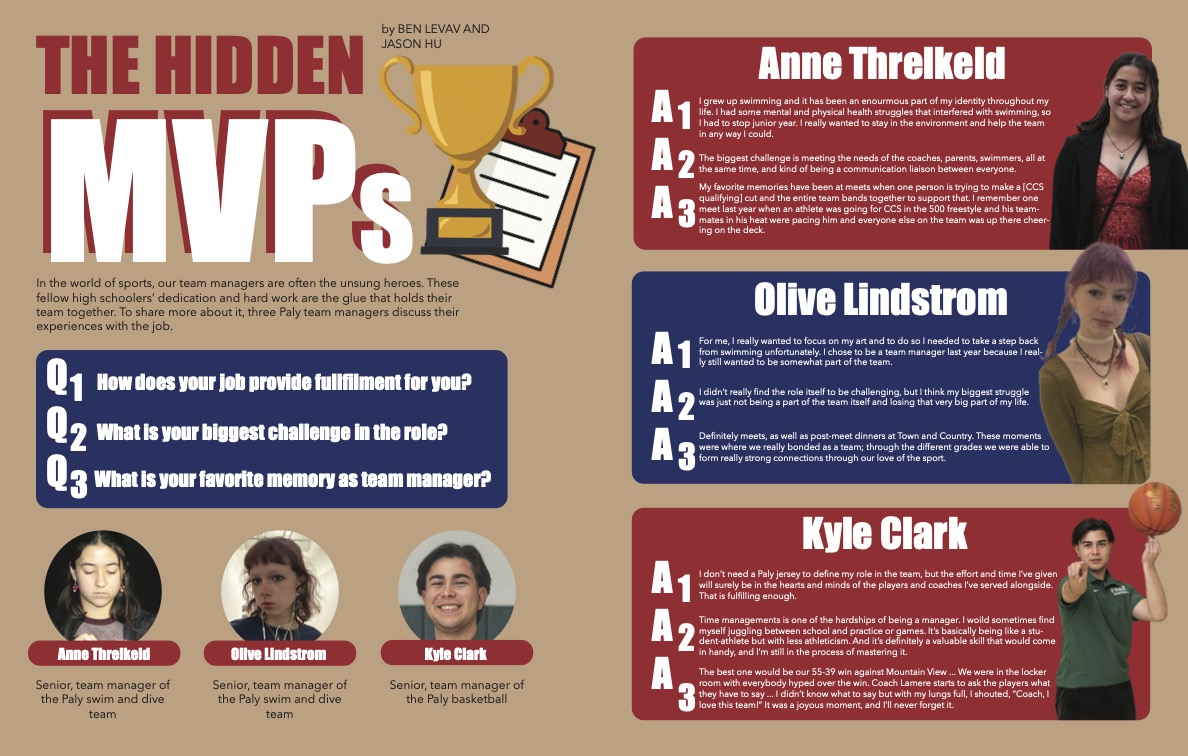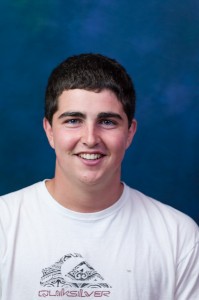

In recent years, Palo Alto High School has had a great deal of success, bringing home four State Championships since the turn of the century. State titles in 2006 for basketball, 2010 for football and 2010 and 2011 for volleyball illustrate Paly’s status as a current sports powerhouse. Paly sports have grown into what they are today through the success of athletes and teams over the past century. Since Paly’s early years, sports have been an important characteristic of the school’s culture. However, over the years, rivals have changed, leagues have been altered, the number of fans has diminished and Paly’s sports have evolved.
Rivalries:
On the morning of Thanksgiving Day, 1968, 30,000 fans marched up Stanford Stadium’s steps looking forward to the “Little Big Game” between two local high school football teams. Sequoia and Paly, the two big rivals of the Southern Peninsula Athletic League (SPAL), looked to complete their undefeated seasons.
Over the last century, Paly has faced several different rivals. In the beginning, through 1927, the only school nearby that posed any athletic threat to Paly was San Jose High School. In the few sports available at the time, the two schools battled it out frequently.
The most memorable and biggest of Paly’s adversaries was Sequoia, according to Rink Babka (‘54), a four sport letterman in football, basketball, baseball and track and field. The 1960 Olympic discus silver medalist remembers the grueling competitiveness between the two schools when he attended.
“It was very good, because the only thing that separated Sequoia and Palo Alto High was the Palo Alto creek,” Babka said. “Basically we knew most of the kids that we competed against and we got to compete against the same kids from that area when we were in junior high, so we knew each other well.”
The rivalry between the two schools lasted from 1927 until Paly switched leagues in 1975, with Hod Ray coaching the Vikings’ football team during much of that stretch. The attendance at these games was beyond any current Paly football game, and the “Little Big Game” was the place to be every year. This rivalry was not only huge because of friendships across the border but also because of the isolated locations of the schools.
“It was very competitive because we were the two powerhouses of the area,” Babka said. “You didn’t have any school that was comparable score-wise or even size-wise until you got to San Jose going south. And not much going north until Burlingame High School. We were kind of out there by ourselves. Very good competition and Sequoia had some great athletes as well.”
The football rivalry was dubbed the “Little Big Game” in tribute to the Stanford-California Big Game.
Keith Raffel (‘68), a former Viking swimmer and water polo player, as well as the father of current Paly athlete Pippa Raffel (‘14), vividly remembers this event.
“The highlight of the entire sporting year was the ‘Little Big Game,’ Paly versus Sequoia, played at Stanford Stadium on Thanksgiving Day at 11 a.m.,” Raffel said.
Each team would try to cap off the regular season with that victory.
“For football, it was always who could beat Sequoia at the end of our season,” Babka said. “It was kind of like Stanford and Cal. Whoever won that one had a good season.”
One of those “good seasons” happened during Raffel’s senior year.
“My senior year [1968] the teams were undefeated in league play going into the game, and memory reports that over 30,000 were at the game,” Raffel said. “Families went every year as a matter of tradition before their big meal. Those were great games.”
In the early 1960s, Raffel recalls attending the game and watching the action unfold.
“I remember rooting for Craig Ritchey (‘62) and Tom Hamilton (‘65) and their fabulous teams a few years before I got to Paly,” Raffel said. “I think one of those Paly teams beat the team of Sequoia’s Gary Beban, who went on to win the Heisman Trophy in 1967 playing for UCLA. However, in 1967, alas, playing the old-fashioned single wing on offense, Sequoia leapt out to a 39-7 halftime lead. They won for fun.”
Over the years, Paly racked up a 20-12-4 (through 1955) record against the Sequoia Cherokees, now called the Ravens.
“The rivalries were back and forth in terms of who won, and the whole town seemed to be aware of the high school sports schedule and who was winning,” Ritchey said.
Despite the loss in the fall of 1967, that year brought Paly several championships in other sports.
“A quick look in the gym will show you how many league championships we won [five] my senior year, 1967-68,” Raffel said. “The disappointment of the ‘Little Big Game’ aside, I don’t know if Paly ever did better, at least in boys’ sports.”
In 1975, after Paly left Sequoia’s league, the primary foe became crosstown Gunn High School. During the years of competition with Sequoia, the in-town rival was the now-defunct third high school, Cubberley.
Although Paly has consistently had tense football games with Archbishop Mitty and Bellarmine, today the main rivalry remains with Gunn. Even though this feud has lasted for many years, it has been predominantly one-sided in favor of Paly. According to Palo Alto Online, the Vikings have won 35 out of the 48 meetings since 1965.
On the court, the basketball teams battled it out as well.
“I remember Mark Ford hitting a jump shot at the buzzer my sophomore [1981] year to beat Gunn in the Paly gym,” Paly basketball player and current sports anchor Dave Feldman (‘83) said. “That was one of my best Paly sports memories. Gunn was our biggest rivalry.”
In water polo, however, the main opponent during the 1980s and 1990s was Bellarmine. Every year the Bells posed a huge threat to all teams and won almost every championship according to Sean Nolan (‘90), an Olympic water polo goalkeeper in 2000.
“Bellarmine was this great water polo powerhouse,” Nolan said. “They won [Central Coast Section] something like 14 years in a row, something ridiculous. We ended up beating them my senior [1990] year in CCS and that was the first time they had lost in a really long time.”
The few times the teams went up against each other came during the postseason, due to their different leagues.
Leagues:
The intense competition with Sequoia and Gunn, unlike that with Bellarmine, began within the different leagues that Paly has participated in, though the league has changed multiple times with the addition of new schools. The games were at first regular league games, but after countless close finishes ended up becoming intense rivalries.
In 1920, the Peninsula Athletic League (PAL) was founded. It originally consisted of Paly, Mountain View, San Jose, San Mateo, Santa Clara, Sequoia and South City in San Francisco. By 1954, Babka explains that the league stretched from Daly City down to San Jose.
“We competed in baseball and basketball, even in football against the Catholic schools, which were Bellarmine down in Santa Clara and then we would go play the Catholic schools in San Francisco,” Babka said.
For football, the league lasted until 1956, when it split into the North Peninsula Athletic League (NPAL) and South Peninsula Athletic League (SPAL).
“One of the big differences from today is the league we played in,” Raffel said. “Paly was in the SPAL along with the other two Palo Alto high schools, Gunn and Cubberley, and Ravenswood (in East PA), Menlo-Atherton, Sequoia, Carlmont and Woodside.”
By the time Nolan began his high school career in the late 1980s, the league was called the Santa Clara Valley Athletic League, which Paly still competes in today.
Evolution of Sports:
Over 110 years ago, in 1898, Paly played its very first football game against San Jose High School. San Jose won 27-0, but nonetheless a team of Vikings was born.
In 1907, after the football team began to take shape, Paly switched to rugby rules for 12 years. During these years, the Vikings sported an impressive record, including a State Championship against Porterville in 1912. Paly beat Porterville 11-8 for the title, though rugby was still less common during those years. In 1920, Paly switched back to regular football rules.
Current Paly students can appreciate the number of sports available now, as it has not always been that way. Originally, Paly only had baseball and football before basketball and track were introduced in the early 1900s.
The first league champion in school history was the 1899 baseball team.
The first girls’ teams formed were baseball, later called softball, and tennis in 1916. A couple years later, the girls’ basketball team became the third sport introduced at Paly for women. The girls received massive support from the school and the students, who helped build a field for the team to practice and play on, according to Madrono. Even with support from the community, no more teams were formed until years later.
According to Babka, the only girls’ sports he recalls during his time were tennis and grass field hockey. Most of the fan support, however, focused on men’s football, basketball, baseball, track-and-field and water polo.
In the 1960s, the number of girls’ sports had not much improved.
“One huge change, for the better, between those days and today is in the importance of girls’ sports,” Raffel said. “The only girls’ teams back then [in 1968], again according to my memory, were swimming, basketball and tennis.”
With the creation of Title IX of the Education Amendments in 1972, high school sports were influenced to increase equal opportunities in sports and education.
Today, girls also have the opportunity to participate in numerous sports including volleyball, cross-country, water polo, soccer, basketball, track and field, softball and lacrosse. This equality in sports for both genders has been key to the athletic success at the school.
Tradition:
The strong legacy of well-performing sports teams has stayed with Paly since the teams started.
“To the school, [sports were] very important,” Babka said. “We were proud of our heritage. Palo Alto High had a terrific heritage and they had many great athletes that went from there into college sports and professional sports.”
As strong as Paly’s teams have been, the number of fans has diminished greatly in all sports since the 30,000 fans at the Sequoia game.
“Last year [volleyball] ended the year ranked number one in the country out of 17,000-plus teams and had very little student fan support,” Wes Raffel (‘72), a former swimmer and water polo player at Paly and parent of current volleyball player Becca Raffel (‘14) and golfer Grant Raffel (‘13), said.
The lack of a strong fan base is widespread. Although the teams receive some support from the community, the stands are rarely full at any game. Even just 20 years ago, during Nolan’s time in the early 1990s, fans had a huge presence at games.
“At the CCS [water polo] games, I remember they had them at DeAnza College, and those stands would be full,” Nolan said. “So maybe 800 people.”
Despite the lack of fans, Paly has always been a league contender throughout the years, with at least one team winning a league title nearly every year.
Last year, while The Viking staff was in New York, a few members interviewed Terry McDonell, one of Sports Illustrated’s former editors-in-chief. He went to Campbell High School near San Jose and saw Paly as a sports force to be reckoned with.
“Palo Alto was always a very, very powerful school, and, I mean, something about being the most important school in the area for so long gave it a kind of swagger,” McDonell said. “I’d hope it’s still there.”
With several championships under Paly’s belt in the past few years, this era resembles the late 1960s.
“I would look at the mid to late ‘60s as the golden era of Paly sports,” Raffel (‘72) said. “We actually won just about everything and had great athletes.”
In the boys’ gym, one can see the six SPAL all-sports awards from 1964 to 1969 that line the wall.
Today, with Paly’s volleyball and football teams winning their leagues, Paly continues to maintain the “swagger” status that it has possessed for over a century. <<<







Mark Weiss • Mar 13, 2021 at 4:44 pm
Sorry, Feldie, Marc Ford buzzer beater was 1980, your freshman year. Gunn was undefeated in 1981, and 25-3 overall, the game at Paly so lopsided that even I got in.
Mark Weiss, Gunn 1982 — reserve player my jr year
PS The Joseph Lin buzzer beater in 2008 was eerily similar…